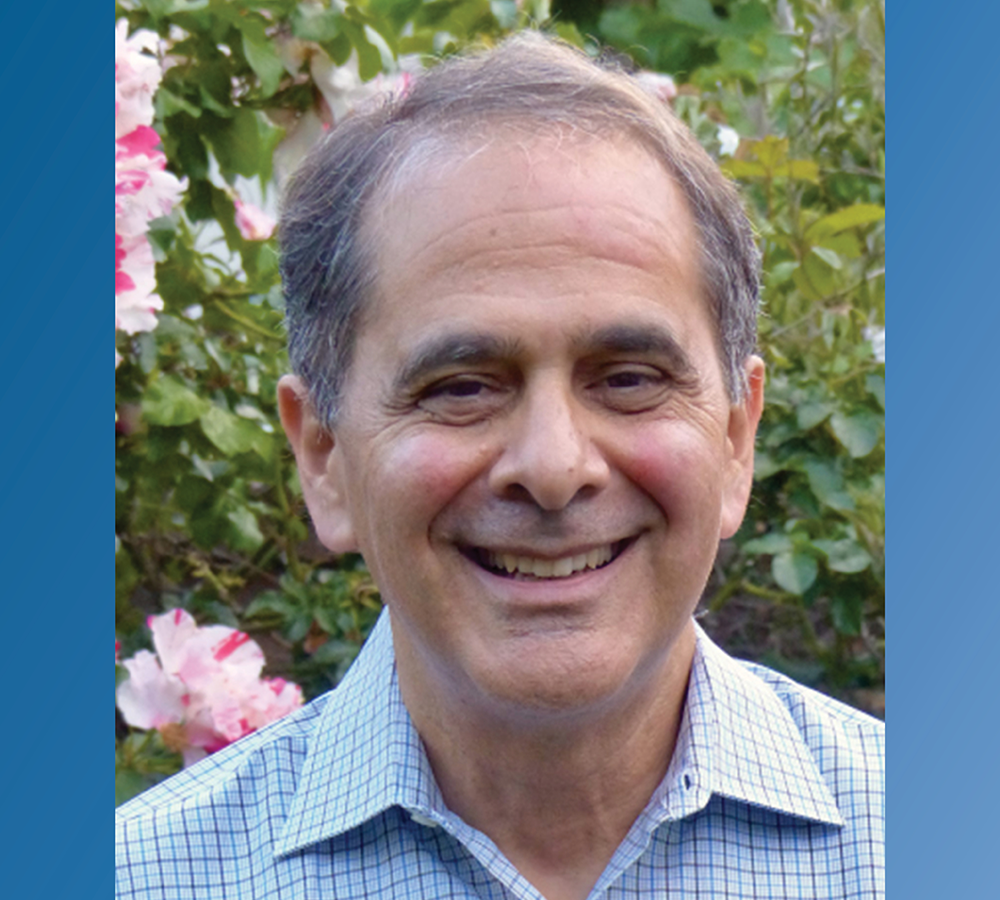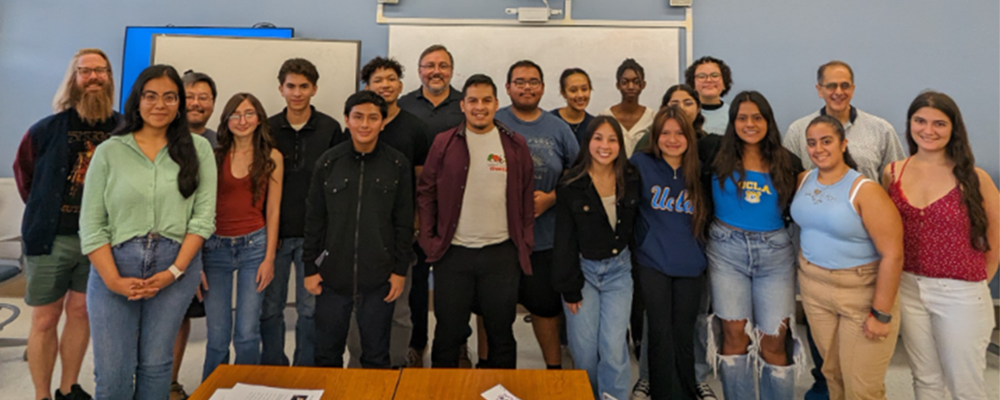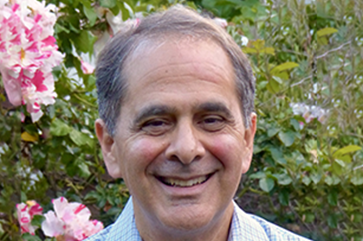Q&A: Albert Courey’s leadership opens the door to science accessibility
He’s helping empower students and faculty alike

By Álvaro Castillo | October 6, 2023
Albert Courey, a professor in the department of chemistry & biochemistry, has always looked for ways to make science accessible to students. From finding bonds between biochemistry and the humanities to publishing pedagogical innovations in the Journal of Chemical Education, Courey has continually strived to highlight how diversity of thought and lived experience can positively charge conversations in and out of the classroom.
“It added a new perspective to my perception of teaching and enabled me to meet other people who are passionate about how we can best allow all students to succeed,” says Courey, the associate dean of equity, diversity and inclusion for the division of physical sciences.
We asked the longtime UCLA professor — he joined the faculty in 1990 — to share his experience as a leader in this field.
How does diversity contribute to science and academia?
To my mind, everyone should have the opportunity to pursue their aspirations. Whether in art, science or politics, I think that it’s a matter of social justice and makes for a more harmonious society.
Additionally, there’s a shortage of people trained in the sciences and, therefore, of people pursuing teaching careers and research. To combat threats like climate change or pandemics, we need more people pursuing these professions.
By tapping into the entire world’s population instead of only those who have been traditionally privileged and encouraged to pursue science, we will have more talented people contributing to progress in these areas.
What are some important division initiatives on the horizon?
I’m most excited about the launch of the new physical sciences summer bridge program that Britney Robinson ’21, the diversity coordinator for physical sciences, has been working on for at least three years. Ultimately, we plan to develop a program specific to transfer students as well, but for our inaugural cohort, we’re just tackling freshmen.
Students from traditionally underserved communities who commit to UCLA might be drawn to the physical sciences because they are interested in learning about black holes, or aspire to develop pharmaceuticals to cure AIDS, COVID or neurodegenerative diseases. But then they get here, and they don’t know if they really belong because they can’t connect with people who share a similar life experience. The most important goal of the bridge program is to build a sense of community by creating a space in which students can bond with other aspiring physical scientists who have similar backgrounds. The program also aims to help students improve their quantitative skills, enabling them to succeed in gateway math, chemistry and physics courses.

Students in the inaugural physical sciences summer bridge program pose with Dean Garcia-Garibay, Associate Dean Al Courey, and math professors Michael Andrews and Bon-soon Lin
Can you talk a little about your collaborations with the division of life sciences?
To be perfectly honest, the division of life sciences has been at the forefront of efforts to reform teaching, especially science teaching, on the UCLA campus.
Around ten years ago, Victoria Sork, dean of life sciences at the time, recognized an immediate and urgent need to eliminate the barriers to equity and inclusion in UCLA classrooms and support the success of all STEM students. She advocated for the creation of a new center on campus dedicated to teaching and learning in science. It was initially named the Center for Education Innovation in the Life Science, with the creation of inclusive student-centered classrooms as one of its guiding principles.
However, we soon realized that the division of physical sciences also had a responsibility to contribute to this effort. While the acronym has stayed the same, CEILS now stands for the Center for Education Innovation & Learning in the Sciences, supporting the development of faculty teaching skills and student success in both the divisions of life sciences and physical sciences.
Additionally, I think it’s important to note that there is no discrete boundary between physical and life sciences. As a biochemist, my teaching and research is at the interface of these two domains. From a more practical standpoint, life science students take a lot of physical sciences classes in preparation for their chosen major and vice versa — physical science majors are often required to taken life sciences classes. Success in science requires the ability to function at the interface between these domains. Implementing inclusive teaching strategies that extend to all scientific disciplines is therefore the best way to positively impact science education and scientific progress.
Speaking of those strategies, could you talk about the new version of the “General Chemistry for Life Sciences” course series you helped develop?
In developing CHEM 14AE and CHEM 14BE, where the “E” stands for “enhanced,” I was part of a team led by Professor Jennifer Casey, who realized that students learn best when they’re actively engaged in the learning process. A big part of these new versions of general chemistry is students collaborating in small groups to discover foundational chemistry concepts. This groupwork is facilitated by professors, teaching assistants and, perhaps most importantly, by undergraduate learning assistants.
Evidence from a recent assessment we conducted indicate that these courses are helping improve students’ sense of belonging in chemistry, as well as persistence in STEM majors. The extensive support of Miguel García-Garibay, the dean for the division of physical sciences, CEILS under the leadership of Rachel Kennison and Shanna Shaked, the Center for the Advancement of Teaching under the leadership of its past director Adrienne Lavine and the department of chemistry & biochemistry under the leadership of the past two chairs, Professors Cathy Clarke and Neil Garg, made this new course series possible. Hopefully, given this evidence of success we’ll continue to receive campuswide support to develop and implement innovative courses like these.




